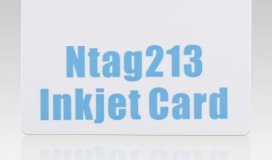The emergence of affordable 3D printers can be combined with RFID technology in a number of new and exciting ways. The convergence between these two technologies has already been used to improve businesses, customer experiences, and even your daily commute.
3D printers have arrived, and they’re a disruptive technology. That’s the message of many articles about the hottest tech trend of recent years. Every day new stories predict the impact the new generation of affordable 3D printers might mean for you – both professionally and personally.
Some of the changes are already here, thanks to a mix of new 3D printing ideas and innovative RFID systems. The two technologies are the basis for an Audi treasure hunt, simpler commuting in Boston, and asset tracking for a business with a rapidly growing number of prototypes.
Open Sesame
You might know the following scenario: you’re at the subway station, or perhaps waiting for the bus, and you can’t find your electronic travel card. By the time you dig it out of your purse or inside pocket, realize that you need more money on it, transfer funds to the card, and then get through to the correct platform or bay, you’re way too late.
Now, imagine you simply had a ring that doubled as your travel card.
Well, if you’re from Boston, then this is already a possibility. The citizens of Boston are already accustomed to using the touch CharlieCard travel card (yes, Charlie’s identity is a mystery).
Two students decided to strip the RFID chip from a CharlieCard and mount it on a ring.
It’s like having your own version of Green Lantern’s ring – only this one works on the public transport system in Boston.
The students, Edward Tiong and Olivia Seow, recently launched a company to produce the rings through a Kickstarter campaign and have raised around $20, 000 –their goal was $5, 000. They have settled on using 3D Printing as the most cost-effective option for manufacturing the rings.
“We are not inventing anything new or cutting edge. We are looking at the most common technology that has been around for a long time, and saying, hey maybe we can do something different with this, ” Tiong told Fast Company1.
Audi Goes on a Treasure Hunt
3D printing opens the door for RFID tags to be embedded almost anywhere.
“We have developed a process by which we embed the tag within the object. This is different from simply attaching a sticker tag to the bottom that anyone can remove” Richard Grundy, co-founder and CEO of Flomio, recently said to RFID Journal2.
Flomio and game developer Plow Digital are looking at the possibilities of embedding NFC tags in 3D printed objects. Audi is interested in the innovative process and is currently discussing potential projects with Flomio and Plow.
The German car company is interested in using Flomio’s NFC technology and Plow Digital’s games in a campaign leading up to the launch of a new vehicle. The idea is to give each guest at the launch a 3D printed figurine with a built-in NFC RFID tag. The figurine and tag is used to participate in games or contests at various points. At the end of the games, the points are added up and the winner is found.
3D Printing Expands Company’s Possibilities – and Amount of Stuff
On a business level, the emergence of cheap 3D printers has made it easier for designers and engineers to print out prototypes during very early stages of product development.
Danish company MOEF were early movers and purchased a 3D plaster printer in 2002. At the time, the price of a 3D printer was well over $100, 000. Six months ago, the company purchased a MakerBot 3D printer. Price tag: $2, 500.
“We’ve gone from a price per print of possibly $1, 000 to a price of $2. 5 per 3D print, ” MOEF’s Kristoffer Kelstrup Sabroe said.
He highlighted how prototypes make product design much more efficient and often give departments outside the engineering and design teams opportunities to make valuable contributions early in the design process. This makes it possible to avoid otherwise costly revisions much later in the development process. It does, however, also mean that you have more prototypes floating around.
In other words, a massive increase in the use of 3D printing in various phases of product development leads to prototypes everywhere that might, over time, become indistinguishable from each other – if not for the use of RFID technology.
As scientists from Carnegie Mellon University recently put it:
“The age of 3D printing, when every object so created can be personalized, will increase the need for tags to keep track of everything. ”.



